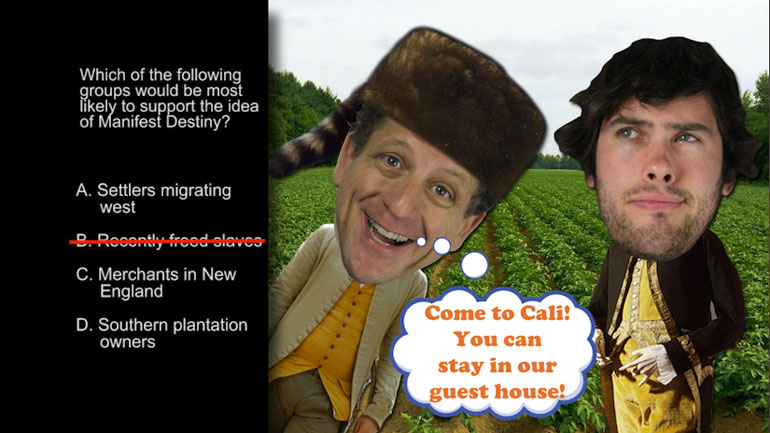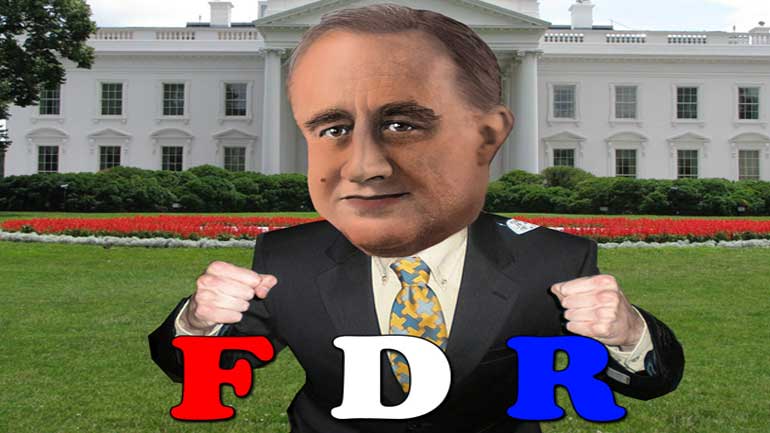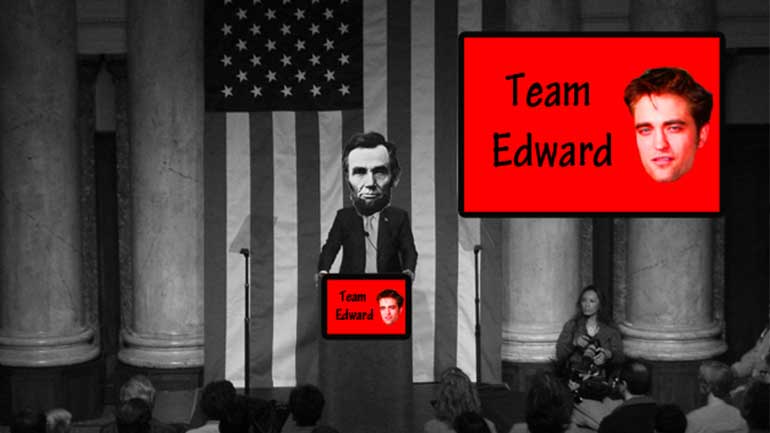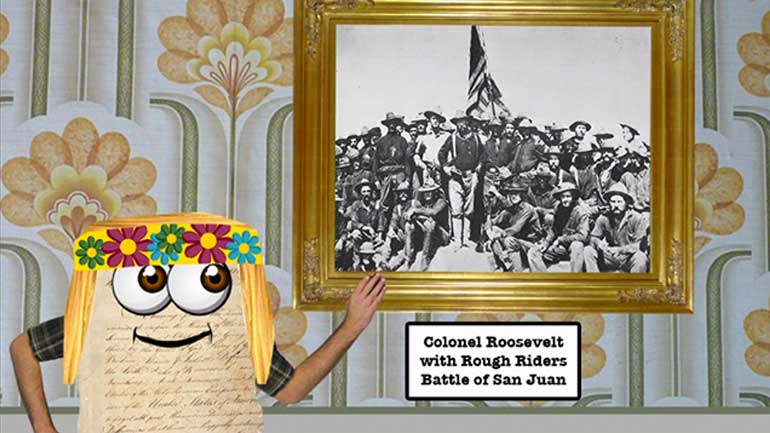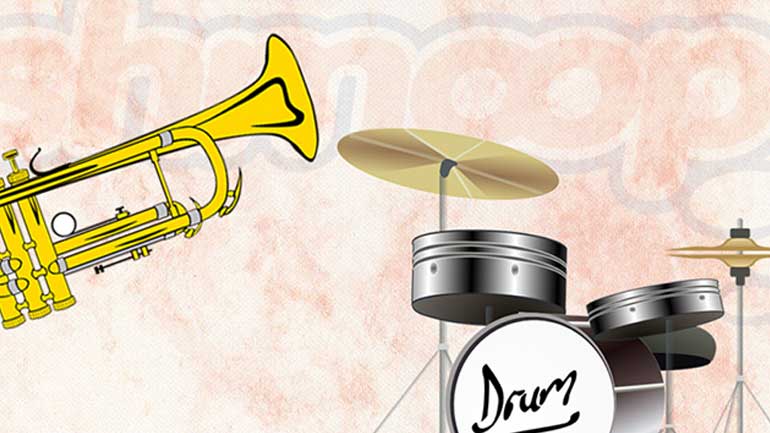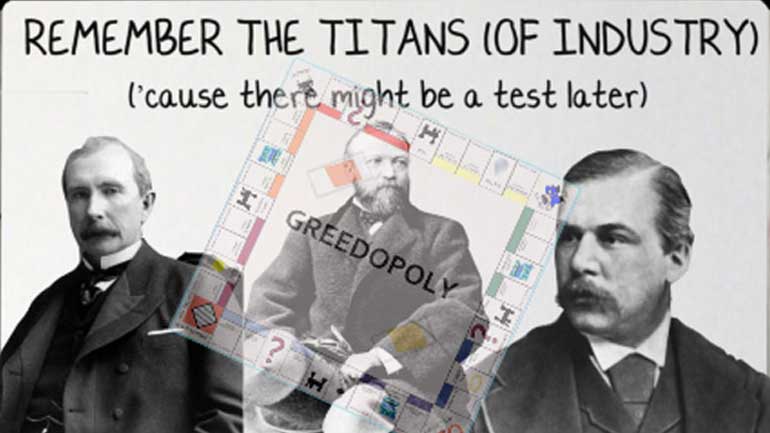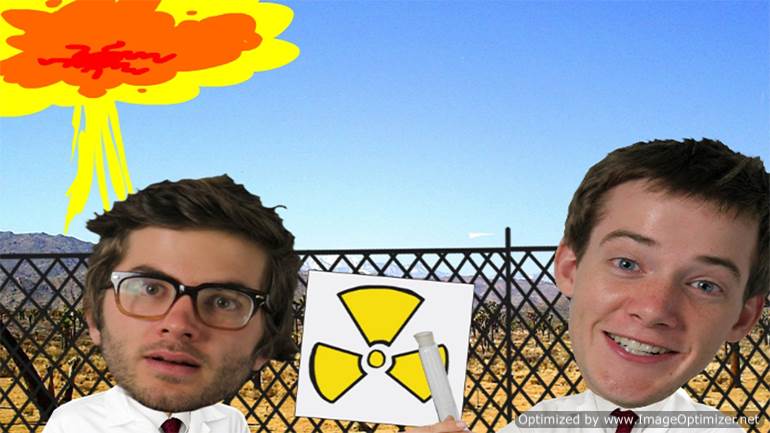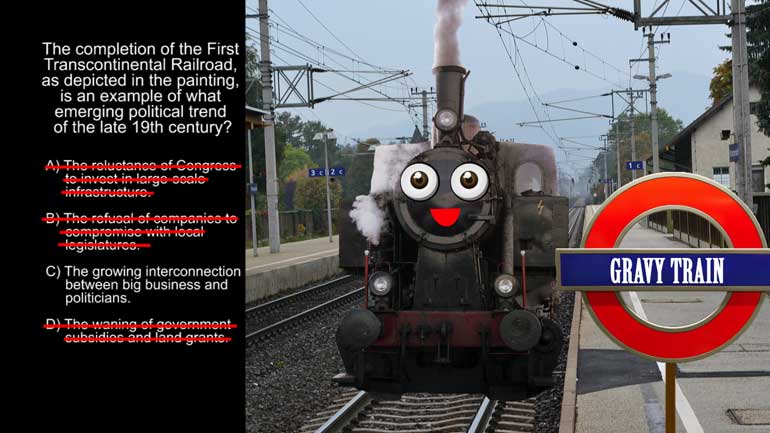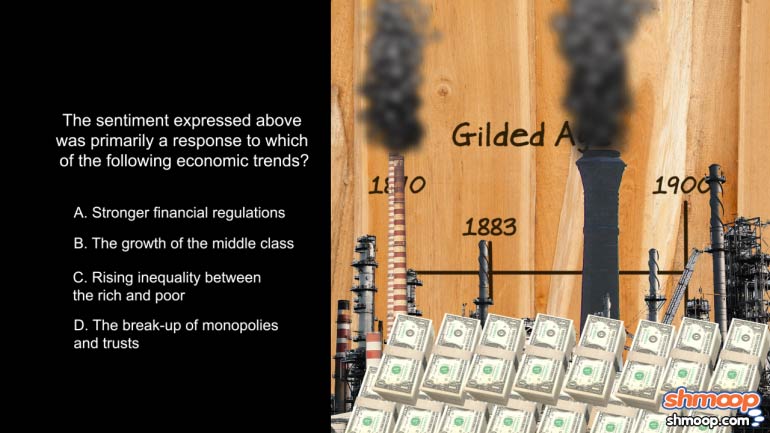ShmoopTube
Where Monty Python meets your 10th grade teacher.
Search Thousands of Shmoop Videos
U.S. History EOC Assessment Videos 64 videos
AP U.S. History 1.1 Period 5: 1848-1877. Which of the following groups would be most likely to support the idea of Manifest Destiny?
In the 1950s and 60s, people weren't just expressing their feelings toward the government—they were singing them, too. (Think Crosby, Stills, Nas...
Deal or no deal? FDR's New Deal provided hundreds of thousands of jobs in the public sector to bring the economy out of the Great Depression. It wa...
AP U.S. History 1.1 Period 7: 1890–1945 291 Views
Share It!
Description:
AP U.S. History 1.1 Period 7: 1890–1945. The Clayton Antitrust Act marked a new period in American labor relations because it...what?
Transcript
- 00:00
[ musical flourish ]
- 00:03
And here's your Shmoop du jour, brought to you by anti-trust acts,
- 00:06
the silent killer of healthy families.
- 00:10
All right, give this excerpt a look-see.
- 00:12
[ mumbles ]
Full Transcript
- 00:14
[ mumbling continues ] All right, and the question:
- 00:17
The Clayton Anti-Trust Act marked a new
- 00:19
period in American labor relations because it... what?
- 00:23
And here are your potential answers.
- 00:24
[ mumbles ]
- 00:27
All right. What exactly was the Clayton Anti-Trust Act?
- 00:31
Well, we see in the excerpt that "the labor of a human being is
- 00:34
not a commodity or an article of commerce."
- 00:37
And that labor organizations should not be considered
- 00:41
"illegal combinations or conspiracies
- 00:44
in restraint of trade."
- 00:46
So, basically, people aren't the same as corporations
- 00:49
and should be able to organize
- 00:51
and collaborate with one another.
- 00:53
Hmm. My, how times have changed.
- 00:55
Let's see which answer best describes this law's impact.
- 00:58
Well, did the Clayton Anti-Trust Act mark
- 01:00
a new period in labor relations because it
- 01:03
B - mandated that corporations negotiate with workers annually?
- 01:07
Well, actually the bill only created the framework for
- 01:10
employers and employees to interact. It said nothing
- 01:12
specific about the negotiations themselves. So it's not B.
- 01:16
Was the change in labor relations that the Act
- 01:19
C - forbade companies from hiring children under 16?
- 01:23
Well, reformers did eventually pass child labor legislation,
- 01:26
but it wasn't a part of this particular law. So that knocks out C, too.
- 01:30
Could the shift in labor policies have been that the law
- 01:33
D - prohibited mergers and acquistions for major corporations?
- 01:38
Well, the Clayton Anti-Trust Act did, in fact, prohibit mergers
- 01:41
that would lead to a company having a monopoly,
- 01:43
but it didn't prohibit mergers of all kinds.
- 01:45
Sorry, rich Uncle Pennybags. So it can't be D, either.
- 01:49
That means that the Clayton Anti-Trust Act marked a new
- 01:52
period in labor relations because it A - clarified that laws
- 01:55
against cartels did not apply to trade unions.
- 01:58
In the Sherman Act of 1890, the courts decided that
- 02:00
the trade unions were a kind of cartel, meaning
- 02:03
that they worked together at the expense of customers.
- 02:06
Because of this constraint, workers had almost
- 02:08
no bargaining power against their employers.
- 02:11
The Clayton Anti-Trust Act clarified that unions, in fact,
- 02:13
were not cartels, paving the way for more organized labor.
- 02:17
So A is the right answer. But remember,
- 02:19
collective bargaining might not always be the bargain you hoped for.
- 02:25
[ baby laughs ]
Related Videos
AP U.S. History Diagnostic 1. Relationships like the one shown in the image resulted in the development of...what?
AP U.S. History Diagnostic 15. How did groups like the ones represented by the image influence industry in America?
AP U.S. History Diagnostic 10. What led to the splintering of the political parties shown in the image?
AP U.S. History Diagnostic 11. The election results shown in the image led to...what?
AP U.S. History Diagnostic 12. How did the Reconstruction Acts open up political opportunities for former slaves?
